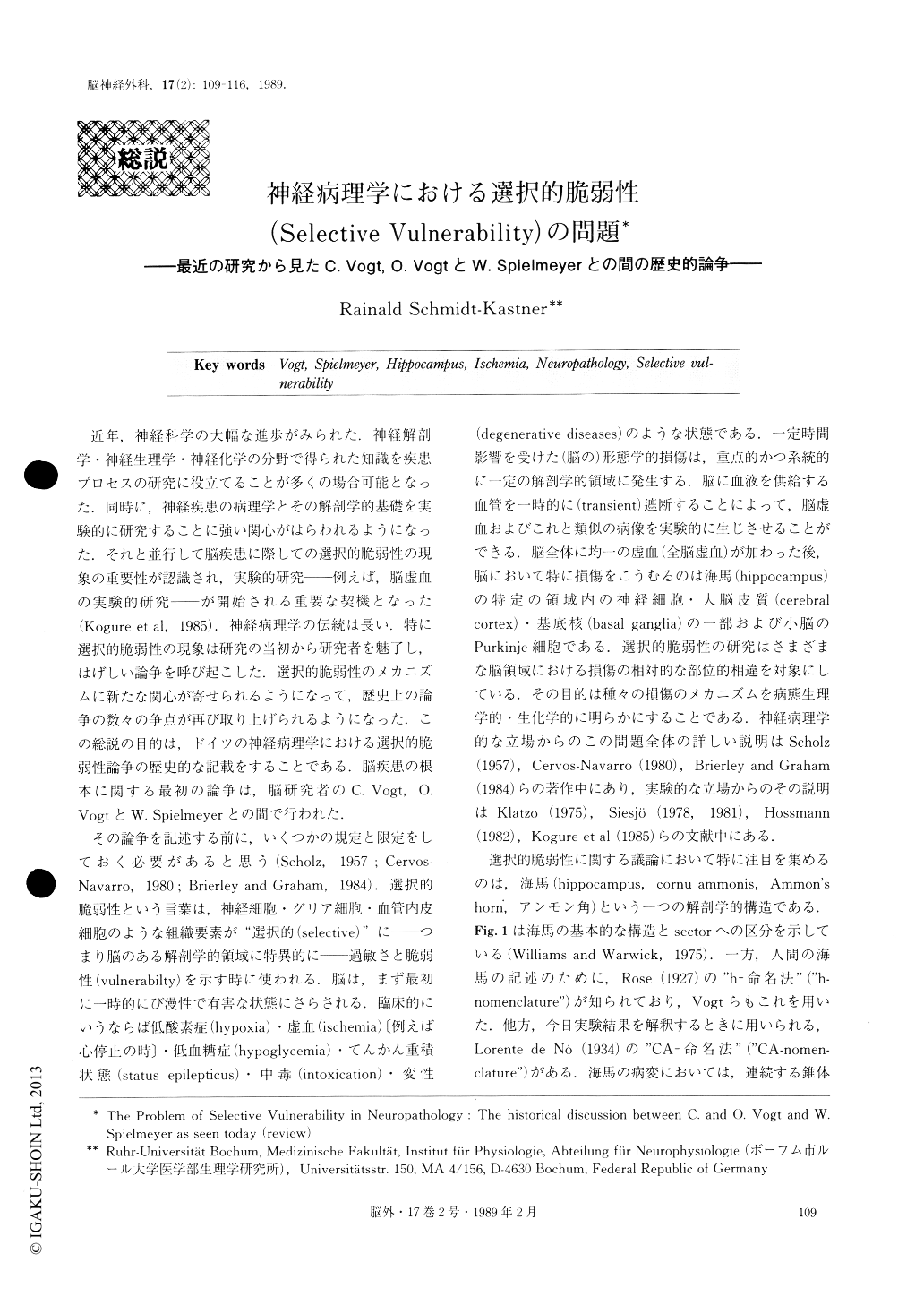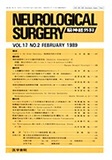Japanese
English
- 有料閲覧
- Abstract 文献概要
- 1ページ目 Look Inside
近年,神経科学の大幅な進歩がみられた.神経解剖学・神経生理学・神経化学の分野で得られた知識を疾患プロセスの研究に役立てることが多くの場合可能となった.同時に,神経疾患の病理学とその解剖学的基礎を実験的に研究することに強い関心がはらわれるようになった.それと並行して脳疾患に際しての選択的脆弱性の現象の重要性が認識され,実験的研究—例えば,脳虚血の実験的研究—が開始される重要な契機となった(Kogure et al, 1985).神経病理学の伝統は長い.特に選択的脆弱性の現象は研究の当初から研究者を魅了し,はげしい論争を呼び起こした.選択的脆弱性のメカニズムに新たな関心が寄せられるようになって,歴史上の論争の数々の争点が再び取り上げられるようになった.この総説の目的は,ドイツの神経病理学における選択的脆弱性論争の歴史的な記載をすることである.脳疾患の根本に関する最初の論争は,脳研究者のC. Vogt,0. VogtとW. Spielmeyerとの間で行われた.
その論争を記述する前に,いくつかの規定と限定をしておく必要があると思う(Scholz, 1957:Cervos-Navarro, 1980:Brierley and Graham, 1984).
This review is focused upon the historical discussion on the topic of selective vulnerability. The extended controverse between C. and O. Vogt on the one side, and W. Spielmeyer on the other is reviewed. The major interest centers around the hippocampus where the phenomenon of selective vulnerability is most obvious. The theory of pathoclisis as proposed by the Vogts is reported which postulates physicochemical peculiarities for different anatomical areas. Spielmeyer took an opposite position and stressed the vascular supply which was examined by Uchimura.

Copyright © 1989, Igaku-Shoin Ltd. All rights reserved.


